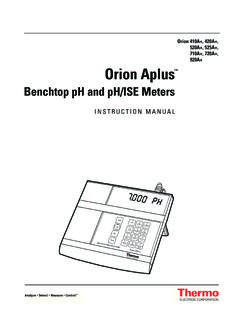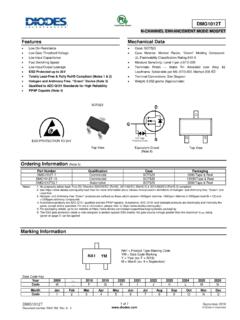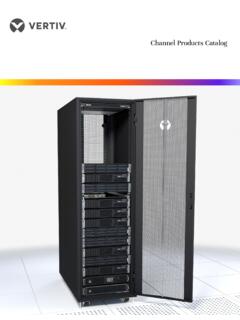Transcription of Wireless N USB 2.0 Network Print Server - StarTech.com
1 Wireless N USB Network Print Server *actual product may vary from photos DE: Bedienungsanleitung - FR: Guide de l'utilisateur - ES: Gu a del usuario - IT: Guida per l'uso - NL: Gebruiksaanwijzing - PT: Guia do usu rio - For the most up-to-date information, please visit: Manual Revision: 12/20/2019. FCC Compliance Statement This equipment has been tested and found to comply with the limits for a Class B digital device, pursuant to part 15 of the FCC Rules. These limits are designed to provide reasonable protection against harmful interference in a residential installation. This equipment generates, uses and can radiate radio frequency energy and, if not installed and used in accordance with the instructions, may cause harmful interference to radio communications. However, there is no guarantee that interference will not occur in a particular installation. If this equipment does cause harmful interference to radio or television reception, which can be determined by turning the equipment off and on, the user is encouraged to try to correct the interference by one or more of the following measures: Reorient or relocate the receiving antenna.
2 Increase the separation between the equipment and receiver. Connect the equipment into an outlet on a circuit different from that to which the receiver is connected. Consult the dealer or an experienced radio/TV technician for help This device complies with part 15 of the FCC Rules. Operation is subject to the following two conditions: (1) This device may not cause harmful interference, and (2) this device must accept any interference received, including interference that may cause undesired operation. Changes or modifications not expressly approved by could void the user's authority to operate the equipment. This Transmitter must not be co-located or operating in conjunction with any other antenna or transmitter. This equipment complies with FCC RF radiation exposure limits set forth for an uncontrolled environment. This equipment should be installed and operated with a minimum distance of 20 centimeters between the radiator and your body. Industry Canada Statement This Class B digital apparatus complies with Canadian ICES-003.
3 Cet appareil num rique de la classe [B] est conforme la norme NMB-003 du Canada. This device complies with Industry Canada licence-exempt RSS standard(s). Operation is subject to the following two conditions: (1) This device may not cause interference, and (2) This device must accept any interference, including interference that may cause undesired operation of the device. Instruction Manual Le pr sent appareil est conforme aux CNR d'Industrie Canada applicables aux appareils radio exempts de licence. L'exploitation est autoris e aux deux conditions suivantes: (1) l'appareil ne doit pas produire de brouillage, et (2) l'utilisateur de l'appareil doit accepter tout brouillage radio lectrique subi, m me si le brouillage est susceptible d'en compromettre le fonctionnement. IC Radiation Exposure Statement: This equipment complies with IC RSS-102 radiation exposure limit set forth for an uncontrolled environment. This equipment should be installed and operated with minimum distance 20cm between the radiator and your body.
4 D claration d'exposition la radiation: Cet quipement respecte les limites d'exposition aux rayonnements IC d finies pour un environnement non contr l . Cet quipement doit tre install et mis en marche une distance minimale de 20 cm qui s pare l' l ment rayonnant de votre corps. L' metteur ne doit ni tre utilis avec une autre antenne ou un autre metteur ni se trouver . leur proximit . FCC ID: 2AA3I-PM1115 UWB. IC: 11232A-PM1115 UWB. Use of Trademarks, Registered Trademarks, and other Protected Names and Symbols This manual may make reference to trademarks, registered trademarks, and other protected names and/or symbols of third-party companies not related in any way to Where they occur these references are for illustrative purposes only and do not represent an endorsement of a product or service by , or an endorsement of the product(s) to which this manual applies by the third-party company in question. Regardless of any direct acknowledgement elsewhere in the body of this document, hereby acknowledges that all trademarks, registered trademarks, service marks, and other protected names and/or symbols contained in this manual and related documents are the property of their respective holders.
5 Instruction Manual 3. Table of Contents Packaging 1. System 1. Product Front 2. Rear 2. LED 3. Reset 3. Hardware 4. Software 4. Technical Warranty Instruction Manual i Introduction Packaging Contents 1x Wireless USB Print Server 1x Power Adapter 1x Software CD. 1x Quick Start Guide System Requirements Windows 10, 8 / (32/64bit), 7 (32/64), Vista (32/64), XP (32/64), Windows Server . 2012, 2008 R2, 2003 (32/64), Mac OS , , Linux / / (tested up to ). Instruction Manual 1. Product Diagram Front View WLAN LED. WPS Button Reset Button Rear View LED Indicators Ethernet Port DC Jack USB Port Instruction Manual 2. LED Indicators LED State Indication When power is connected, the Status Status Blinking for POST (Yellow) indicator will flash five times, and then go solid. LAN Port has a valid Network connection USB On (Green). at 100 Mbps. LAN Port has a valid Network connection WLAN On (Yellow). at 10 Mbps. Reset Button Reboot the Print Server : 1. Verify the power of Print Server is turned on.
6 2. Press the reset button once, and then release it. Note: This will restart the Print Server and stop all on-going and pending Print jobs. Print a Self-test Page 1. With the Print Server powered on and your printer connected and powered, press the reset button for 8 seconds, and then release it. 2. A test page including the current Print Server settings will be printed. Reset to Factory Defaults: 1. Disconnect the power adapter from the Print Server . 2. Hold down the reset button. 3. Reconnect the power adapter while continuing to hold the reset button for about 5. seconds. 4. Release the reset button. 5. The Print Server will restart. WARNING: This will erase all settings on the Print Server and return it to factory default. Instruction Manual 3. Default Settings Username: admin Password: (None). Wireless Mode: Ad-Hoc (Peer-to-Peer). SSID: PM1115UW. IP Address: Installation Hardware Installation 1. Turn off the power to your printer. 2. Connect the Print Server to your printer with the appropriate printer cable.
7 3. Turn the printer on. 4. Plug in the AC power adapter into the DC jack on the Print Server . 5. Wait ~40 seconds for the Print Server 's Power On Self Test (POST) to complete. 6. (Optional) Connect an RJ45 Network cable to the Print Server , then to your Network switch or wall jack. Software Installation For full operating instructions and specifications, please visit PM1115UW. Windows 1. Find the Wireless Print Server by viewing your available Wireless networks and connecting to the PM1115UW SSID. Note: If you cannot find the PM1115UW Network , then your version of Windows may not be configured to show Ad-Hoc Wireless networks. To resolve this issue, you need to use an RJ45 cable to either connect your Print Server to your Network switch or to connect directly to the computer. When the setup is complete, you can disconnect the Network cable. 2. Insert the setup CD into your CD/DVD drive. 3. Select Run from the Autoplay menu. If Autoplay is disabled on your system, browse to your CD/DVD drive and run the application.
8 Note: The setup CD will install the Print Server driver, PSAdmin and Setup Wizard into your computer. The default installation directory will be C:\Program files\. Network Print Monitor. Instruction Manual 4. 4. Click Next on the following screen and the wizard will automatically discover the Print Server . At this point of the install, you may Windows Firewall message, click Allow Access if prompted. 5. From the Select A Print Sever screen, select the Print Server that you want to configure and click Next. 6. Click Yes, I want to change settings , then click Next to configure the Wireless and IP. settings of the Print Server to match your Network : Select your desired Communication Type: Infrastructure (Access Point). Ad-Hoc (Peer-to-Peer; default). SSID: If using Ad-Hoc mode, enter the SSID you would like the Print Server to display If using Infrastructure mode, enter the SSID of the access point that you want to connect to Note: If you require a site survey to determine the names of available access points, please use the web console method, outlined in the full online manual.
9 Instruction Manual 5. Channel: optional Data Transmit Rates: select Auto or others Transmit Mode: select Auto or others On the Wireless Security screen, enable or disable WEP/WPA/WPA2 encryption, configure according to your Wireless Network and click Next. On the TCP/IP Settings screen, specify a fixed or dynamic IP address for the Print Server , a fixed IP address is highly recommended. Click Next. Note: The IP address of Print Server must be within the same subnet as your Network adapter. 7. In the setup wizard, select an already configured printer from the list, click Next, Next and then Finish to complete the installation. OR. Select Add New Printer to launch the Windows Add Printer Wizard, if the Print Server is connected to a printer that hasn't been installed before and does not appear in the list. 8. Click Next and select Local Printer, make sure the Automatically detect and install my Plug and Play printer check box is NOT checked. Then click Next. 9. Make sure the Use the following port radio-button is clicked and select LPT1: (recommended Printer Port) from the pull-down list.
10 Then click Next. 10. Select Manufacturer and Printer from the lists of printer drivers. Then click Next. 11. If you already have the printer's driver installed, you will be asked whether to keep it or to replace it. Click Next. Supply a name for the printer and choose whether you want to make it your default printer. Then click Next. 12. Then, choose whether you want to share the printer with other Network user, Print a test page (please select No.), etc. Select the appropriate radio-button and click Next and Finish. 13. In the setup wizard, finish the installation by highlighting the installed printer in the Select a Printer list and click Next, Next -> Finish. 14. Click Start -> Printers and Faxes and highlight your newly installed printer. 15. Right-click, select Properties, then the Ports tab and verify that the Print Server 's port appears. 16. Select the General tab and click Print Test Page to verify the configuration. Note: If you want to install more Print servers, start the setup wizard from your Windows Start menu: Start -> All Programs -> Network Print Server -> PSWizard and repeat the installation procedure.









